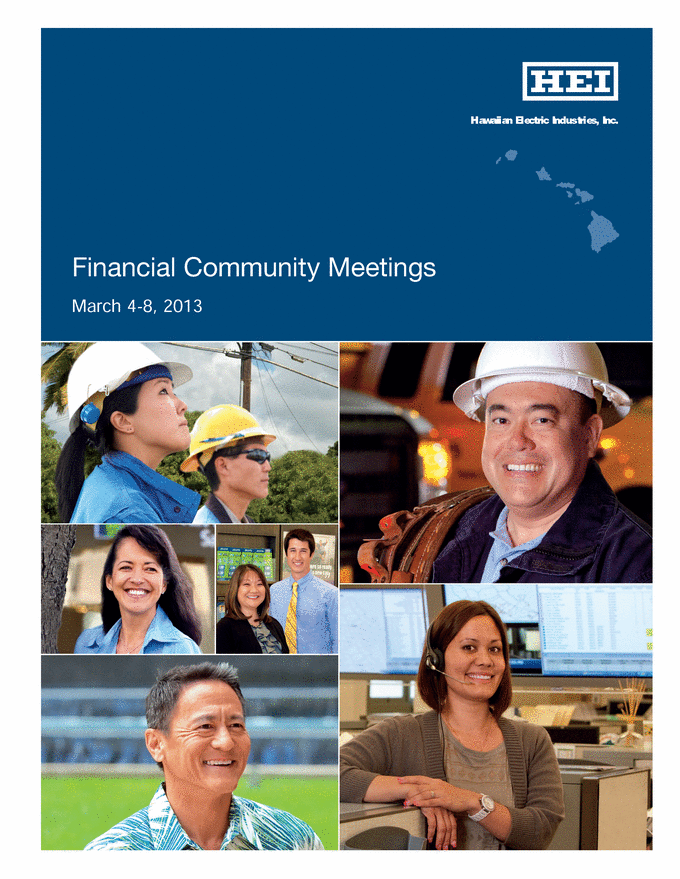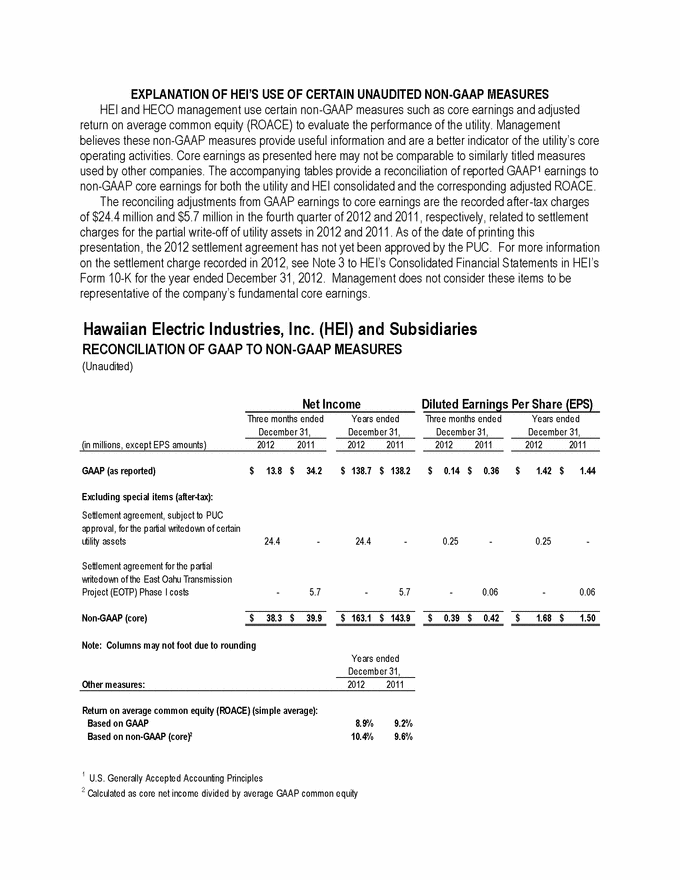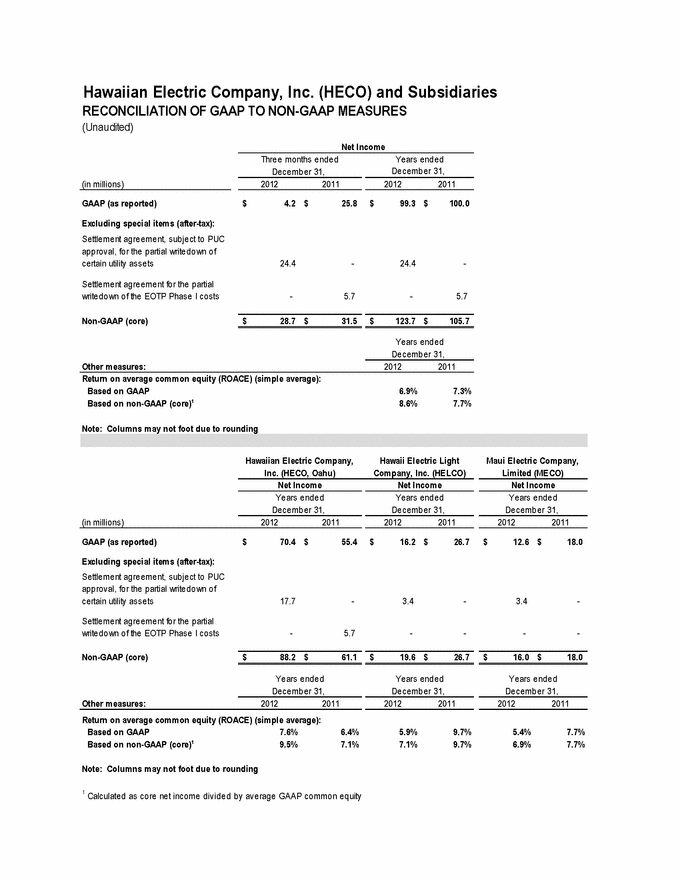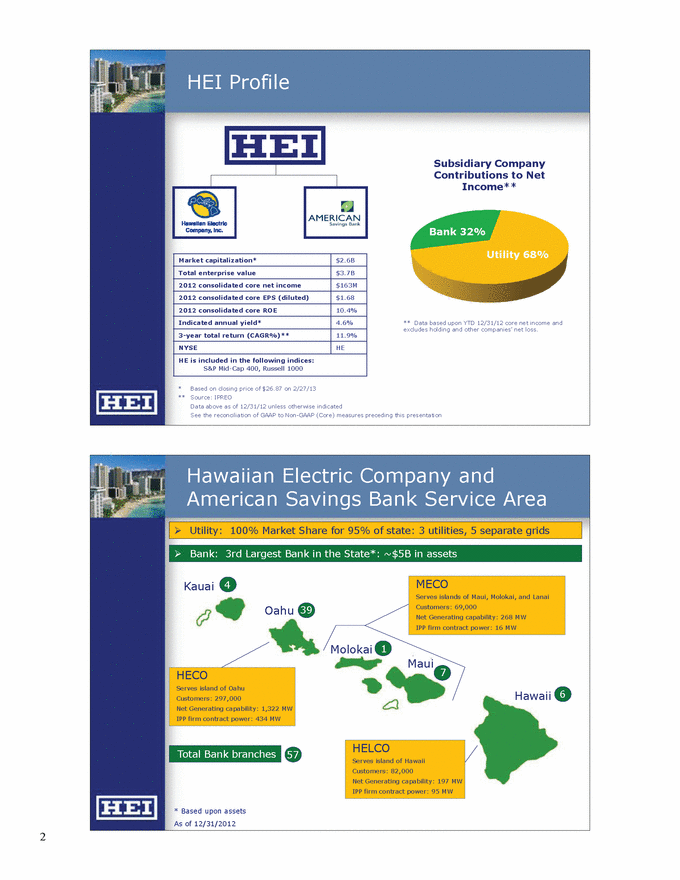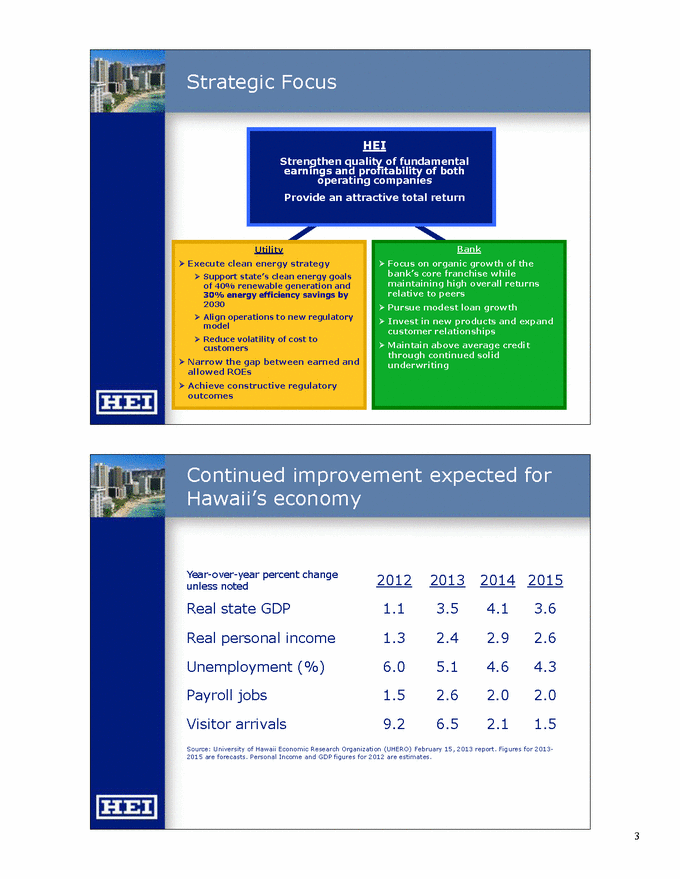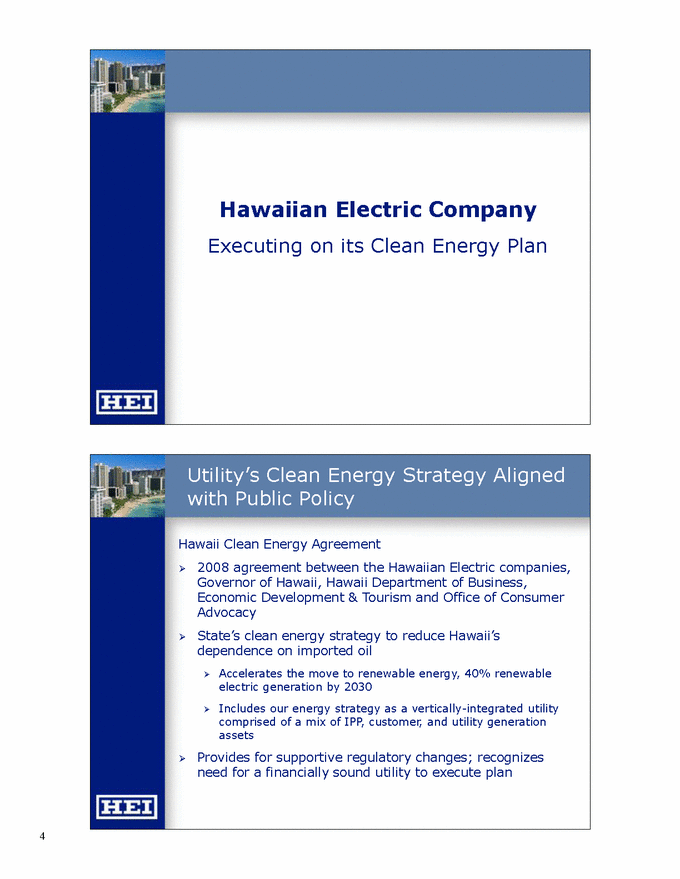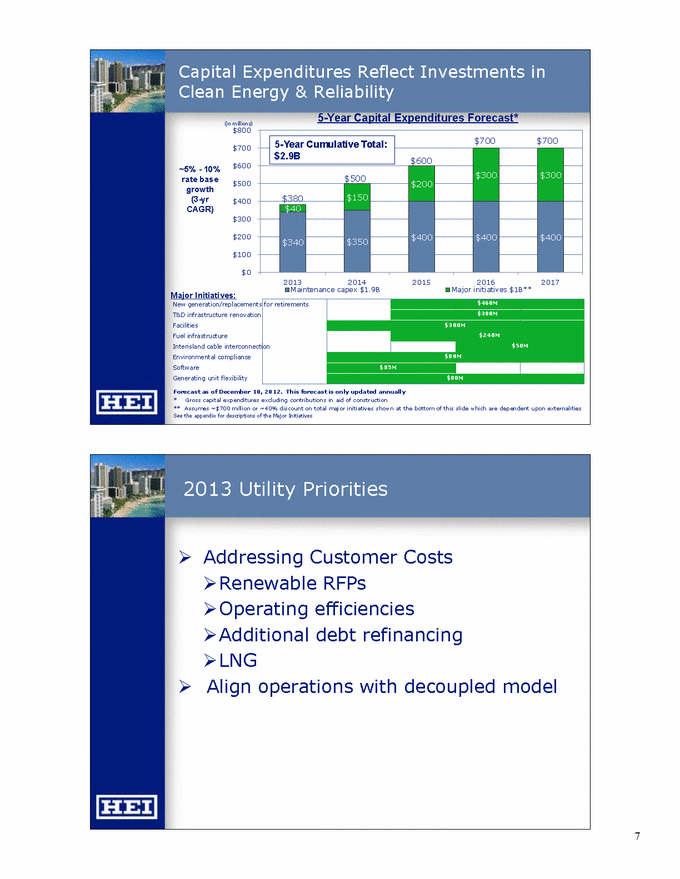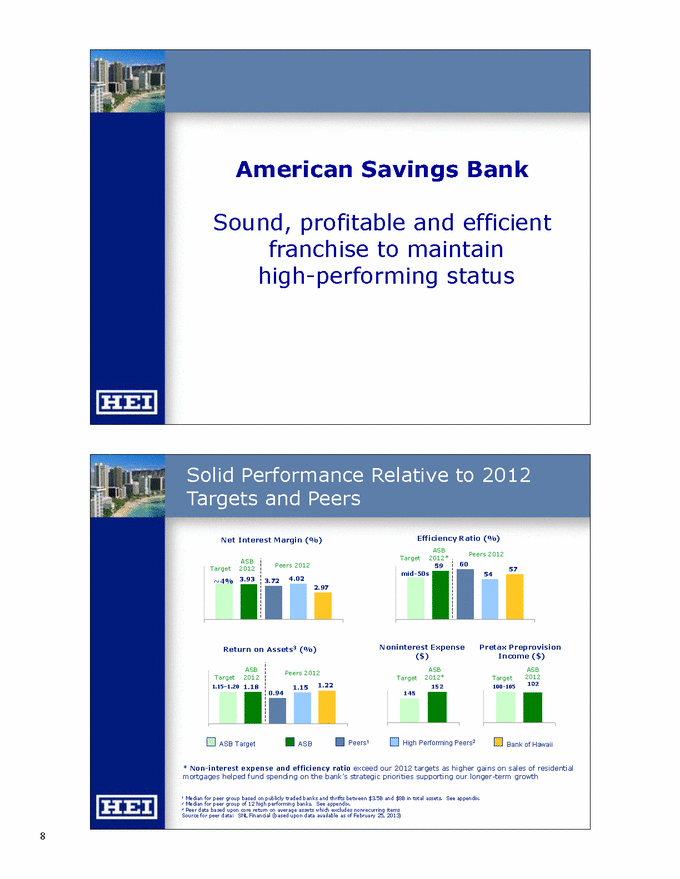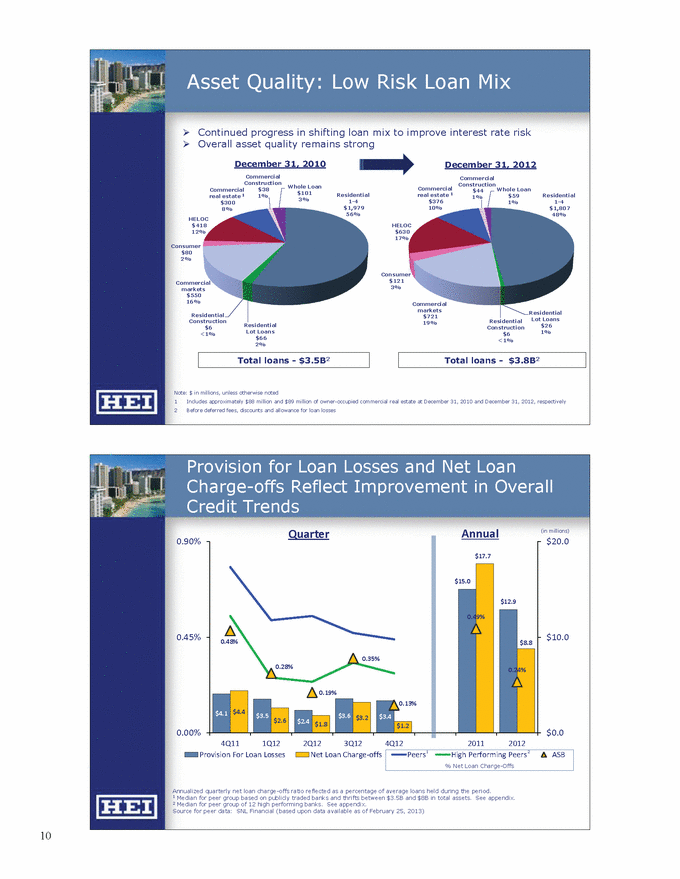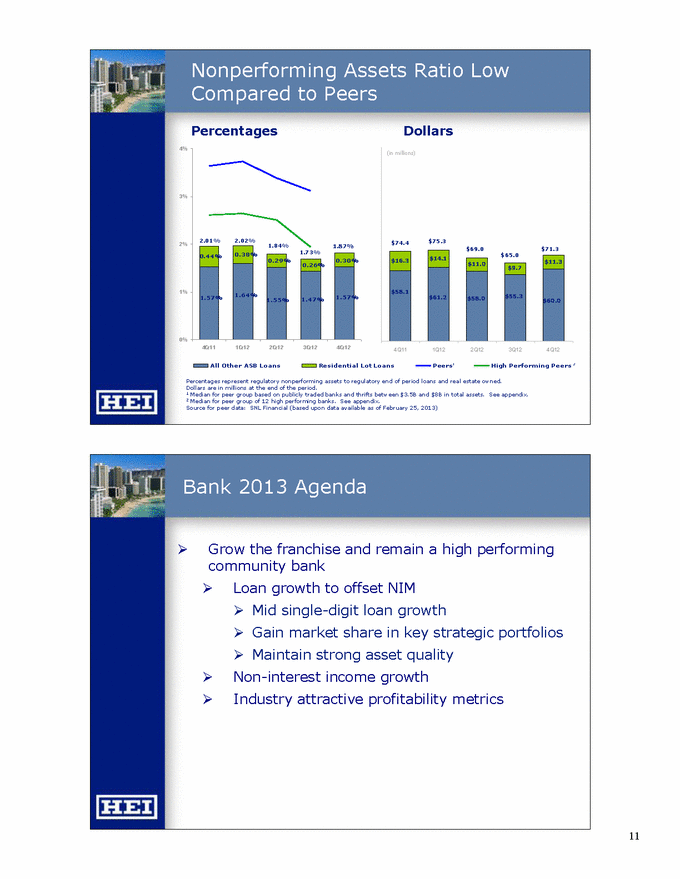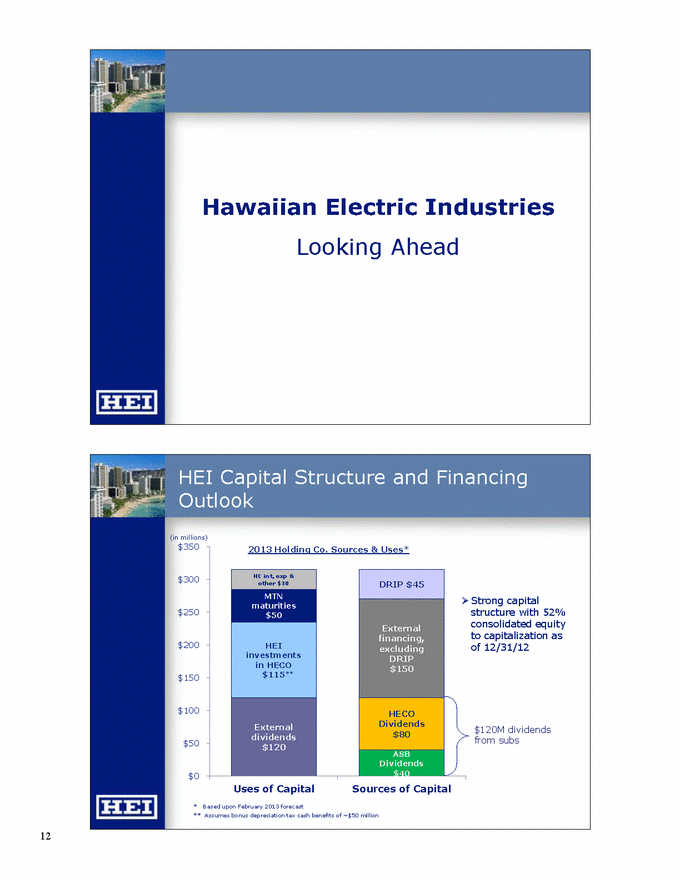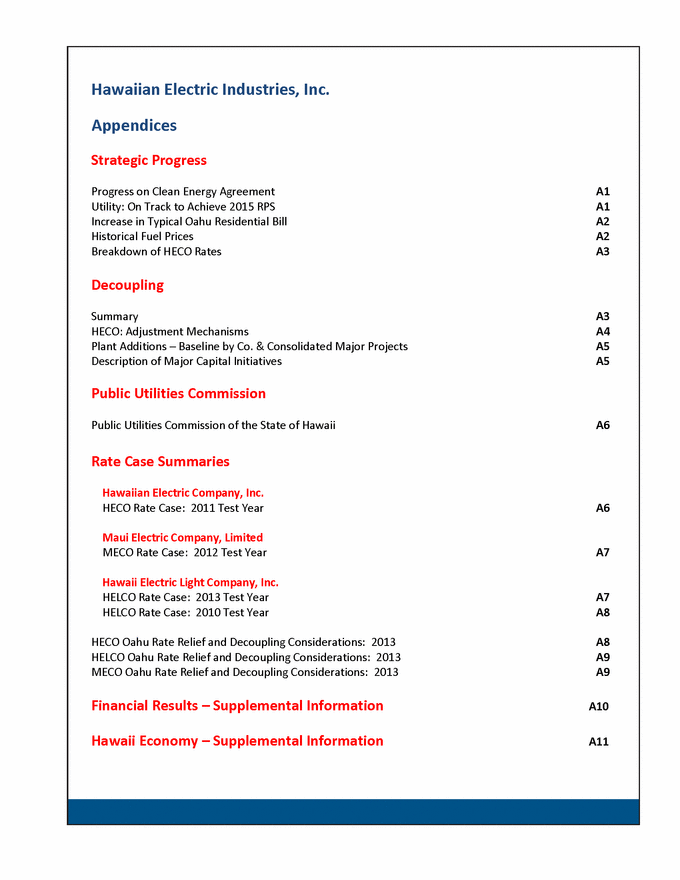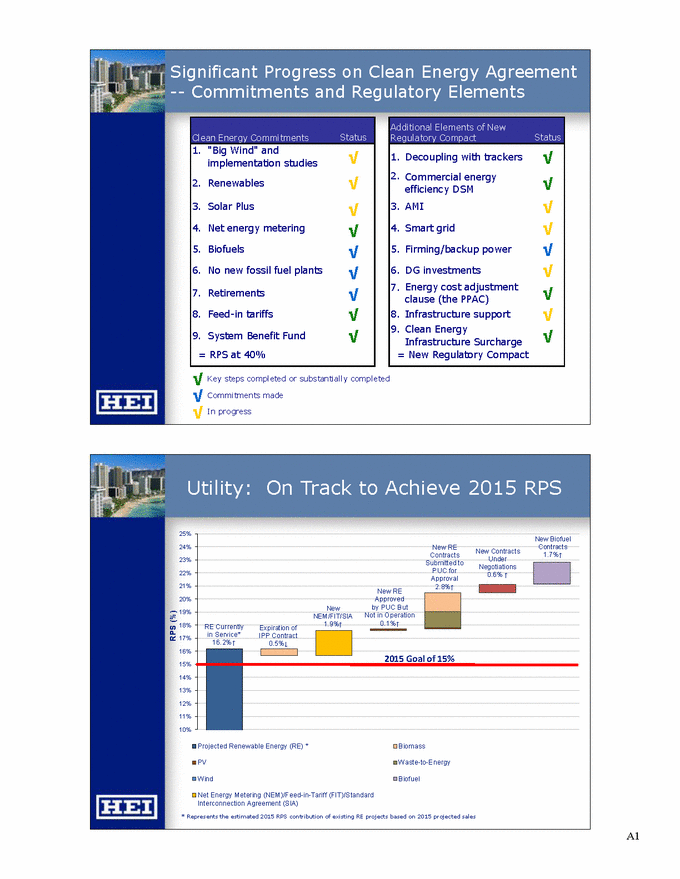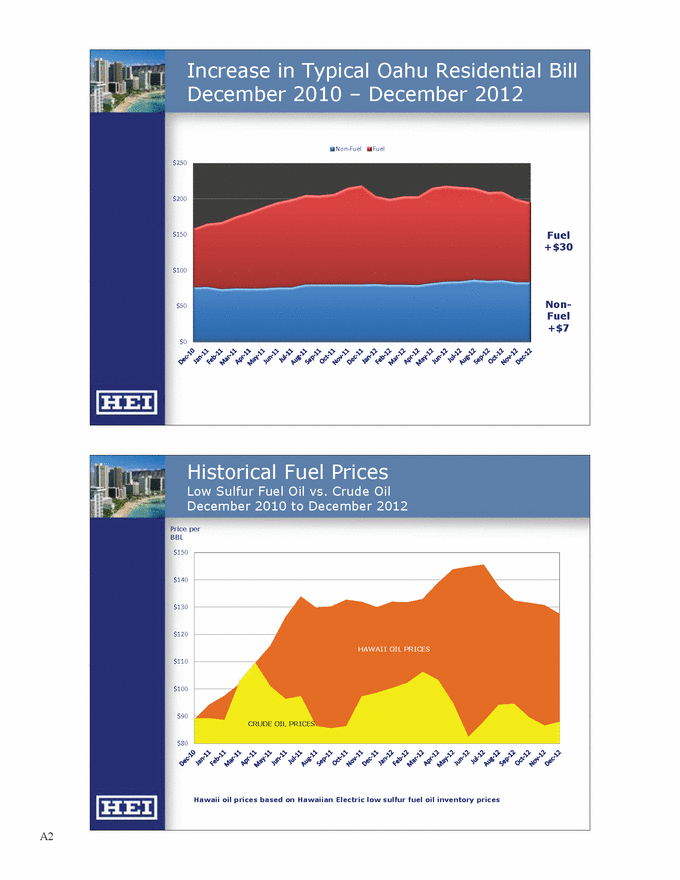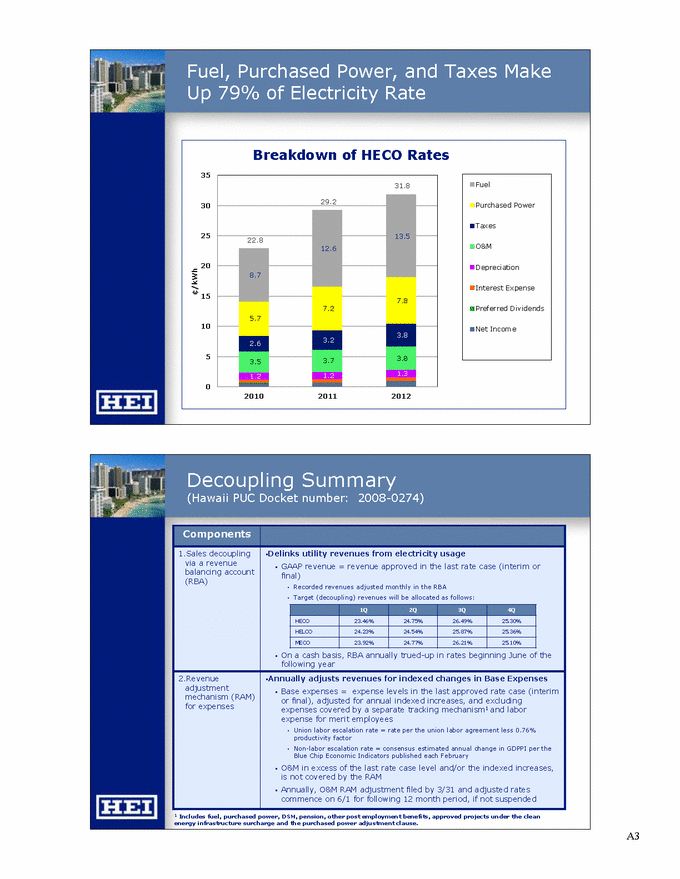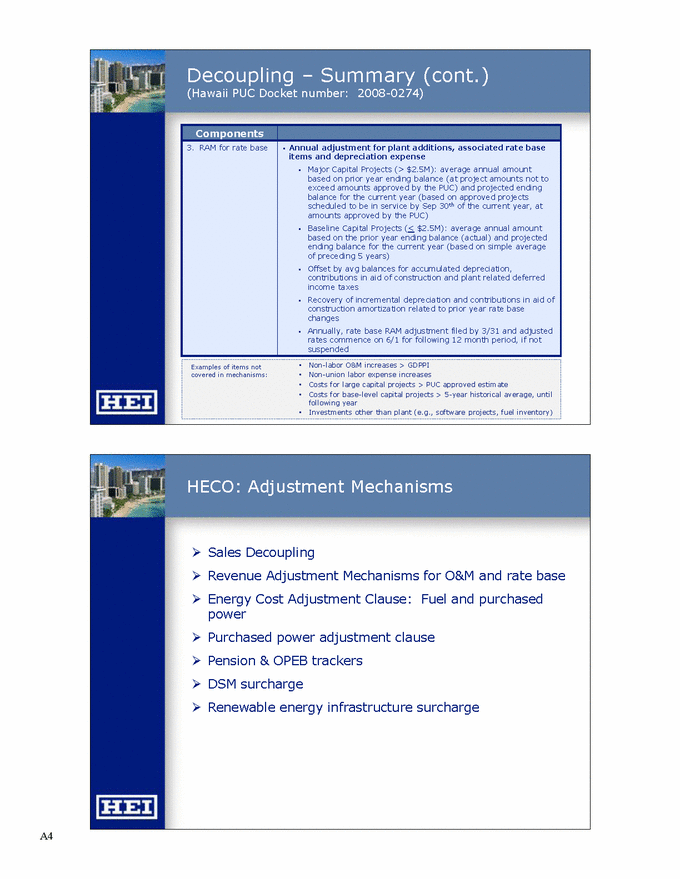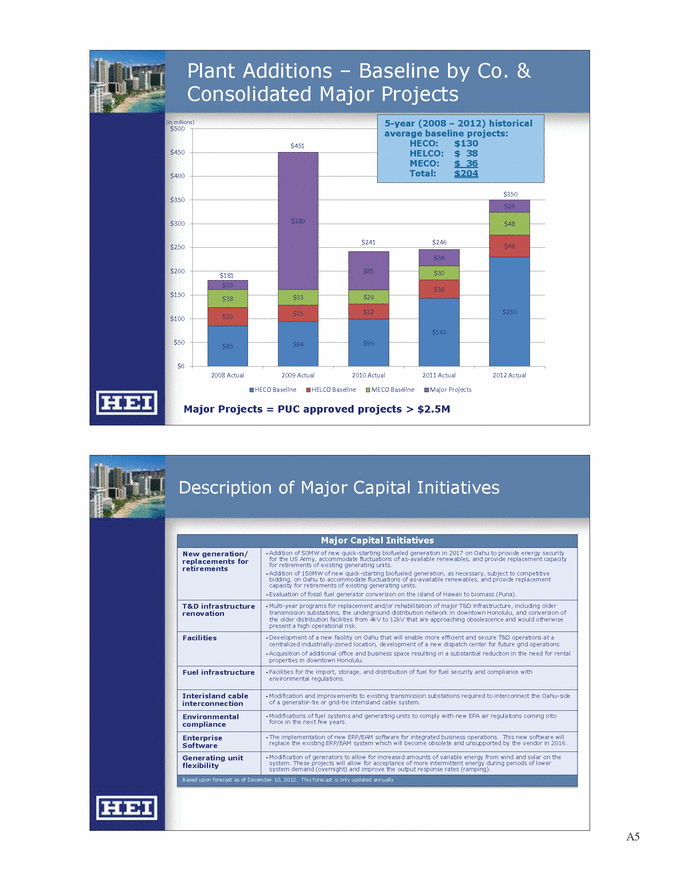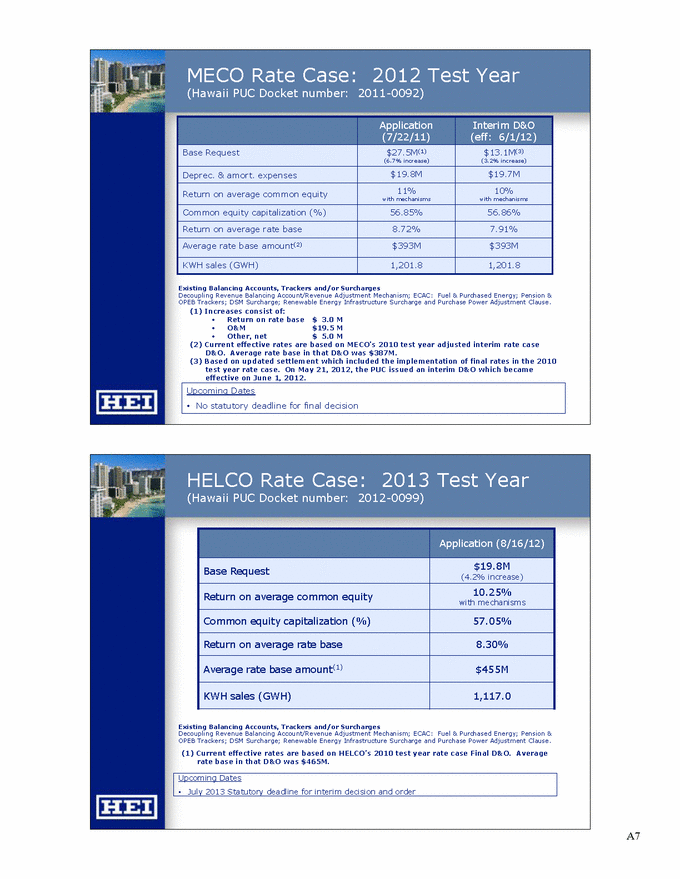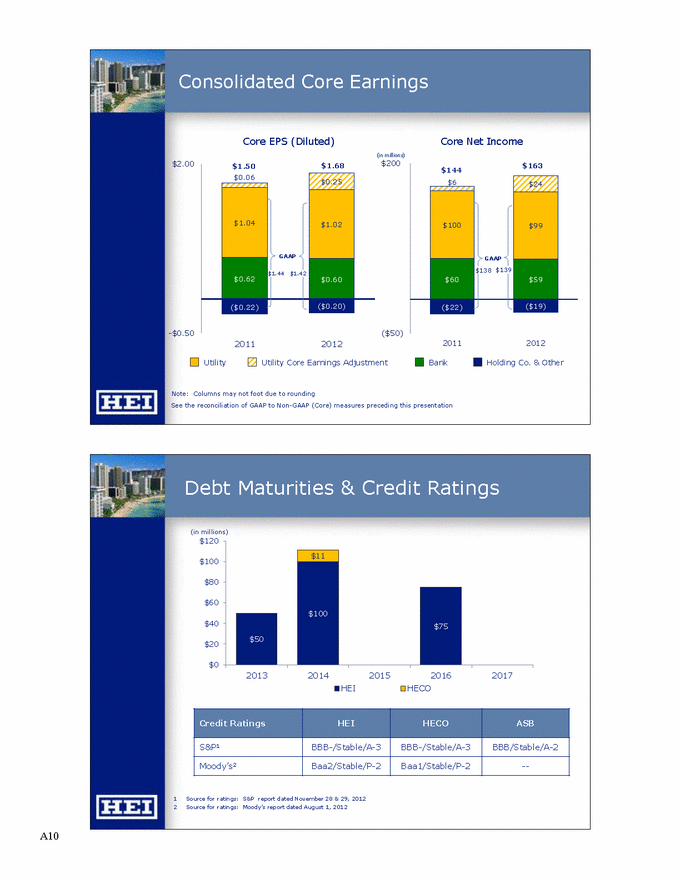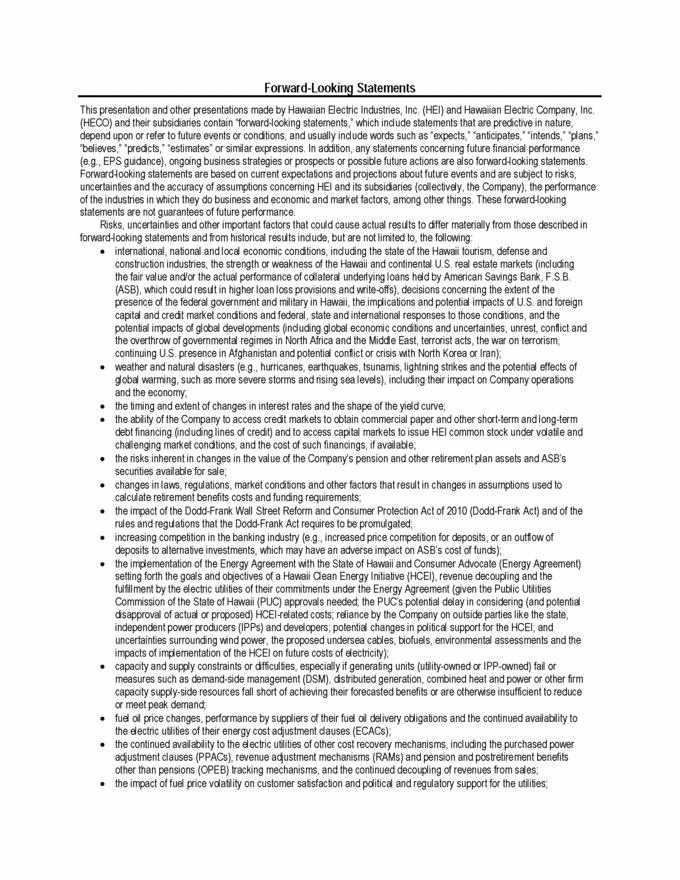
| Forward-Looking Statements This presentation and other presentations made by Hawaiian Electric Industries, Inc. (HEI) and Hawaiian Electric Company, Inc. (HECO) and their subsidiaries contain “forward-looking statements,” which include statements that are predictive in nature, depend upon or refer to future events or conditions, and usually include words such as “expects,” “anticipates,” “intends,” “plans,” “believes,” “predicts,” “estimates” or similar expressions. In addition, any statements concerning future financial performance (e.g., EPS guidance), ongoing business strategies or prospects or possible future actions are also forward-looking statements. Forward-looking statements are based on current expectations and projections about future events and are subject to risks, uncertainties and the accuracy of assumptions concerning HEI and its subsidiaries (collectively, the Company), the performance of the industries in which they do business and economic and market factors, among other things. These forward-looking statements are not guarantees of future performance. Risks, uncertainties and other important factors that could cause actual results to differ materially from those described in forward-looking statements and from historical results include, but are not limited to, the following: • international, national and local economic conditions, including the state of the Hawaii tourism, defense and construction industries, the strength or weakness of the Hawaii and continental U.S. real estate markets (including the fair value and/or the actual performance of collateral underlying loans held by American Savings Bank, F.S.B. (ASB), which could result in higher loan loss provisions and write-offs), decisions concerning the extent of the presence of the federal government and military in Hawaii, the implications and potential impacts of U.S. and foreign capital and credit market conditions and federal, state and international responses to those conditions, and the potential impacts of global developments (including global economic conditions and uncertainties, unrest, conflict and the overthrow of governmental regimes in North Africa and the Middle East, terrorist acts, the war on terrorism, continuing U.S. presence in Afghanistan and potential conflict or crisis with North Korea or Iran); • weather and natural disasters (e.g., hurricanes, earthquakes, tsunamis, lightning strikes and the potential effects of global warming, such as more severe storms and rising sea levels), including their impact on Company operations and the economy; • the timing and extent of changes in interest rates and the shape of the yield curve; • the ability of the Company to access credit markets to obtain commercial paper and other short-term and long-term debt financing (including lines of credit) and to access capital markets to issue HEI common stock under volatile and challenging market conditions, and the cost of such financings, if available; • the risks inherent in changes in the value of the Company’s pension and other retirement plan assets and ASB’s securities available for sale; • changes in laws, regulations, market conditions and other factors that result in changes in assumptions used to calculate retirement benefits costs and funding requirements; • the impact of the Dodd-Frank Wall Street Reform and Consumer Protection Act of 2010 (Dodd-Frank Act) and of the rules and regulations that the Dodd-Frank Act requires to be promulgated; • increasing competition in the banking industry (e.g., increased price competition for deposits, or an outflow of deposits to alternative investments, which may have an adverse impact on ASB’s cost of funds); • the implementation of the Energy Agreement with the State of Hawaii and Consumer Advocate (Energy Agreement) setting forth the goals and objectives of a Hawaii Clean Energy Initiative (HCEI), revenue decoupling and the fulfillment by the electric utilities of their commitments under the Energy Agreement (given the Public Utilities Commission of the State of Hawaii (PUC) approvals needed; the PUC’s potential delay in considering (and potential disapproval of actual or proposed) HCEI-related costs; reliance by the Company on outside parties like the state, independent power producers (IPPs) and developers; potential changes in political support for the HCEI; and uncertainties surrounding wind power, the proposed undersea cables, biofuels, environmental assessments and the impacts of implementation of the HCEI on future costs of electricity); • capacity and supply constraints or difficulties, especially if generating units (utility-owned or IPP-owned) fail or measures such as demand-side management (DSM), distributed generation, combined heat and power or other firm capacity supply-side resources fall short of achieving their forecasted benefits or are otherwise insufficient to reduce or meet peak demand; • fuel oil price changes, performance by suppliers of their fuel oil delivery obligations and the continued availability to the electric utilities of their energy cost adjustment clauses (ECACs); • the continued availability to the electric utilities of other cost recovery mechanisms, including the purchased power adjustment clauses (PPACs), revenue adjustment mechanisms (RAMs) and pension and postretirement benefits other than pensions (OPEB) tracking mechanisms, and the continued decoupling of revenues from sales; • the impact of fuel price volatility on customer satisfaction and political and regulatory support for the utilities; |
